FORCLIME
Forests and Climate Change ProgrammeTechnical Cooperation (TC Module)

Select your language
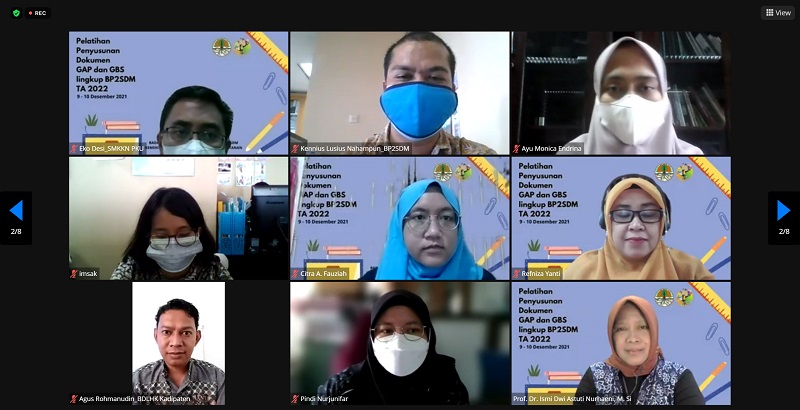
Gender mainstreaming (PUG) in relation to development begins with the planning and budgeting process. Planning and budgeting documents with a clear gender perspective should be able to accommodate equality between men and women in terms of access, benefits and participation in decision-making in order to benefit development outcomes. Two of the gender analysis tools available in the planning and budgeting process are the Gender Analysis Pathway (GAP) and the Gender Budget Statement (GBS).
The PUG Sub-Working Group (WG) of the Human Resources Extension and Development Agency (BP2SDM) at the Ministry of Environment and Forestry (MoEF) is continuing to support the implementation of PUG at the policy, program and activity levels by encouraging all policy documents to incorporate a gender perspective. To this end, FORCLIME has offered its support for the PUG Sub-WG in BP2SDM as regards the implementation of training sessions on the development of GAP and GBS for BP2SDM activities and programs during 2022.
An online training session which dealt with these issues was held from Thursday 9 – Friday 10 December 2021 and was attended by 77 participants from the BP2SDM working unit and Balai Taman Nasional Wasur. The training opened with a number of remarks from Drs Ade Palguna, Secretary of BP2SDM, who expressed his expectation that PUG activities would continue to be developed and that champions would be created through the PUG training of trainers. A speech was also given by Dr Ir. Apik Karyana, M.Sc. the Head of the Planning Bureau for MoEF, who outlined the importance of translating the PUG concept into concrete activities.
The training was facilitated by Prof Dr Ismi Dwi Astuti Nurhaeni, M.Si from the Faculty of Social and Political Sciences at Sebelas Maret University. During the first day, the materials incorporated into the training sessions included gender responsive budgeting planning theory, an introduction to GAP, an introduction to GBS and the filling out of a GAP sheet. During the second day, training focused on the practice of reviewing GAP through the preparation of a BP2SDM working unit. Drafts of the GAP from Badan Diklat LHK Pematangsiantar and SMK Kehutanan Negeri Samarinda were chosen as examples to review. Through this approach, participants were able to actively discuss and exchange tips relating to the preparation of GAP in ways that precisely addressed gender-related issues.
‘In the future, BP2SDM needs to have complete data on the target participants of our activities, so that a baseline and targets for gender-responsive development can be clearly measured,’ explained Agus Setyawan, a representative from the BP2SDM Secretariat.
As a follow-up, training related to GBS is scheduled for 2022 and will commence with a review of GAP by all working units.
For more information, please contact:
Edy Marbyanto, Strategic Area Manager for Human Capacity Development
Nurdita Rahmadani, Junior Advisor for Monitoring, Evaluation and Reporting
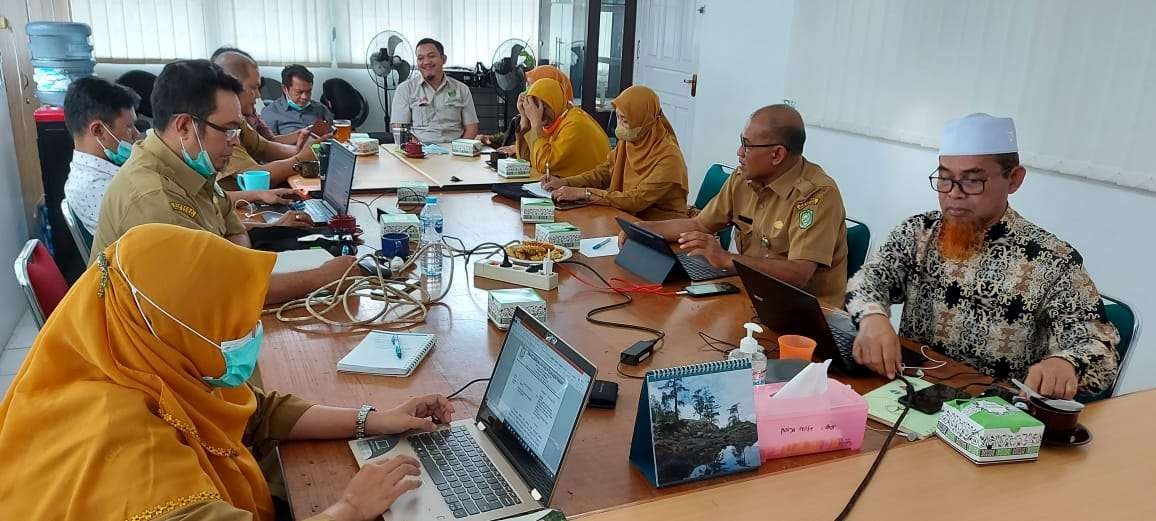
In order to evaluate the 2021 work plan, the West Kalimantan REDD+ Working Group, in conjunction with FORCLIME, held a recent consolidation meeting that was attended by the Environment and Forestry Service of West Kalimantan Province, Tanjungpura University and development partners in West Kalimantan. The meeting was held on 10 December 2021 at the Secretariat of the West Kalimantan REDD+ Working Group and aimed to evaluate the achievements of the REDD+ Working Group targets for 2021.
The meeting was opened by Mr. Ir. Adiyani, MH, Head of the Environment and Forestry Service of West Kalimantan. Mr. Adiyani addressed the strategic role of the REDD+ Working Group in relation to emissions reduction at the provincial level, the plan to adjust the institution of the REDD+ Working Group in accordance with climate-change issues at the global and national levels, changes to institutional nomenclature within the West Kalimantan Provincial Government and plans to involve a wider selection of stakeholders at the provincial level.
Furthermore, Prof. Dr. Gusti Hardiansyah as Chair of the REDD+ Working Group, delivered an update on climate change that addressed issues at the global and national levels, specifically as regards the 2021 Conference of the Parties (COP26), the emissions reduction targets that the REDD+ Working Group needs to anticipate and the importance of strengthening data and information, particularly in relation to measurement and monitoring activities.
This update was then followed by a discussion that was held by the meeting participants and that tackled an evaluation of the activities of the REDD+ Working Group during the 2021 period, which included:
• Working Group performance until quartal 3, 2021.
• Changes in the nomenclature of government institutions at the provincial level.
• The urgency of involving other parties in the Working Group.
• Finalization of the West Kalimantan Measurement, Reporting and Verification (MRV) website.
• Progress in the development of climate finance proposals relating to West Kalimantan's REDD+ activities, including the Green Climate Fund.
• Challenges and obstacles relating to the implementation of various activities.
As a follow-up, the REDD+ Working Group will revise various regulations that address the REDD+ Working Group as an institution, integrate the West Kalimantan MRV website into the national MRV website and also harmonize the plans and programs of the stakeholders that are aimed towards achieving emissions reduction targets at the provincial level.
For more information, please contact:
Yenny, S.Hut, MT, Environment and Forestry Service of West Kalimantan Province, Member of the West Kalimantan REDD+ Working Group
Jumtani, Advisor for Sustainable Forest Management and GCF Focal Point
Wandojo Siswanto, Strategic Area Manager for Forest Policy and Climate Change
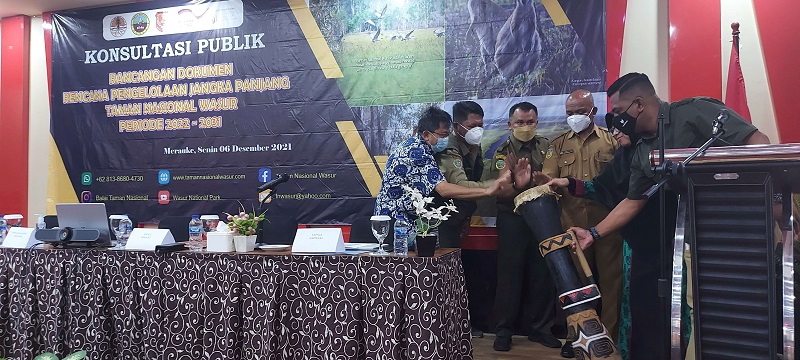
The conservation area management plan is applied by the management unit and related parties in order to establish programmes and action plans aimed at realizing the management objectives of the nature reserve and its natural conservation areas. In this regard, the management plan is a tool that can be used by managers in order to manage the area and its existing natural resources and biodiversity, both now and as we head into the future. Forest management plans are prepared based on the results of forest management and forestry plans and take into account the aspirations, participation and cultural values of the community as well as the prevailing environmental conditions.
The Wasur National Park Long-Term Management Plan (RPJP) for the 2014-2023 period will remain valid for another two years, however, the plan is no longer relevant for use as a management reference due to the fact that several changes have now been implemented, which include changes to the zoning of the Wasur National Park (Wasur NP), as well as to the area of the national park. As a result, the Evaluation Technical Team has recommended that comprehensive changes be made to the Wasur National Park Long-Term Management Plan, which will subsequently be incorporated into the new management plan for the 2022-2031 period. The objectives of the 2014-2023 management plan include the maintenance of the original ecosystem of wetlands as a habitat for important flora and fauna, increasing the incomes of communities living in and around the area, collaborative management and the development of natural tourism, nature laboratories and research.
As one of the steps involved in the preparation of a long-term management plan, the Wasur NP conducted a public consultation in relation to the draft management plan document on 6 December 2021 in Merauke Regency, Papua Province. This public consultation was organized in order to solicit input from various interested parties in relation to the 2022-2031 management plan.
In her opening remarks, the Director of Forestry and Water Resources Conservation for Bappenas, Dr Nur Hygiawati Rahayu, invited all parties to jointly engage in discussions of an area that not only belongs to Papua but the whole world as a global conservation zone.
In his closing remarks, the Head of the Papua Natural Resources Conservation Agency, Edward Sembiring, reminded all participants that the management of the Wasur National Park cannot be undertaken by the Wasur National Park alone due to the fact that the area comprises over 400,000 hectares, which is not supported by a sufficient number of employees. This means that the manager must implement management activities at the site level through the active involvement of traditional communities that have customary rights over the area through various activities, including the establishment of a community group that addresses the issue of fire prevention (Masyarakat Peduli Api - MPA) and a community group that supports the local forest rangers (Masyarakat Mitra Polhut).
Moreover, various cooperation agreements and partnership schemes such as Conservation Agreements and Conservation Partnerships have also been initiated. Through this hand-in-hand relationship between the management of the Wasur NP and its surrounding local communities, it is hoped that over the course of the next decade, these parties will become more capable and stronger, working together in order to maintain and conserve the biodiversity of this national park and to achieve all of the objectives that have been agreed upon under the framework of the 2022-2031 Wasur management plan.
For more information, please contact:
Theodora F. Resubun, Advisor for Sustainable Forest Management and Coordinator for Papua Province
Mohammad Sidiq, Strategic Area Manager for Sustainable Forest Management and Coordinator for Papua and West Papua Provinces
 |
Supported By: |
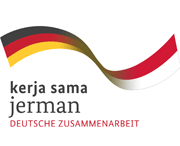 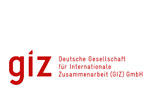 |